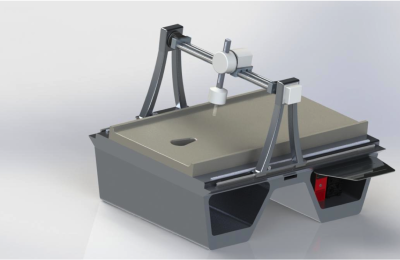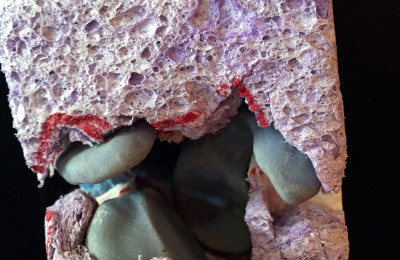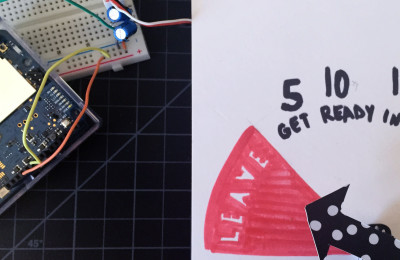Automated Laser Hair Removal
Our assignment was to automate the laser hair removal process by designing a precision machine. The wand weight and dimensions were given to us along with the following customer requirements: a 24″ x 42″ area of attack, up to a 45 degree angle of attack, 0.5 +/- .1 lbf application, 0.010 inch accuracy and a 1 second cycle time for each 0.25 square inch pulse.
My main responsibilities including concept design, motor torque calculation, sizing and selection, and CAD. We settled on a gantry style system for simplicity and cost. The required motor torques were calculated using a triangular velocity profile to minimize acceleration and torque requirements. We found all of our servo motors through MicroMo. We reduced the overall time from 150 to 30 minutes for the required area which would decrease labor costs by $160,000 each year while increasing revenue by about $550,000. With a $442,000 development cost we predicted a payback period under 10 months (R=10%).
Methods + Machines Used:
Functional Decomposition– in order to divide and organize the main constraints and areas of focus
Morphological Charts – used to brainstorm performance solutions within constraints
Pugh Charts – to rate solution strategies on criteria such as maneuverability, complexity and cost
Motor Torque Calculations – in order to select motors that are not only effective but safe
CAD – SolidWorks was used to design and render the machine
Control Flowchart – to visualize the state of activities of the machine
Financial Justification – to validate our solution strategy






